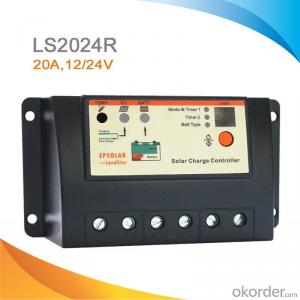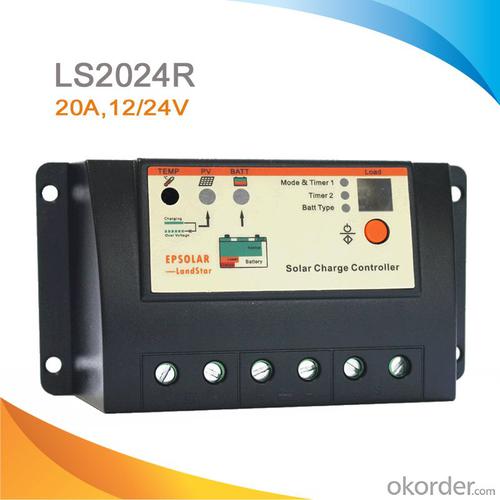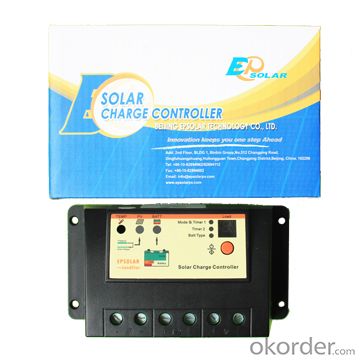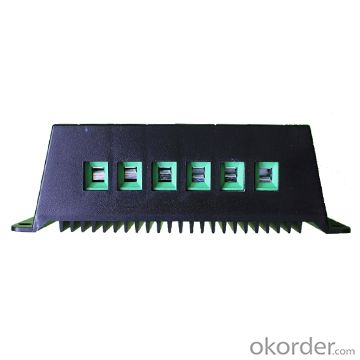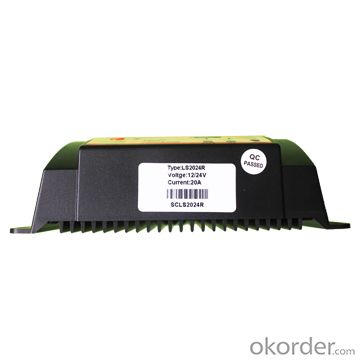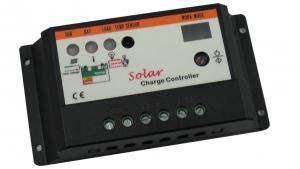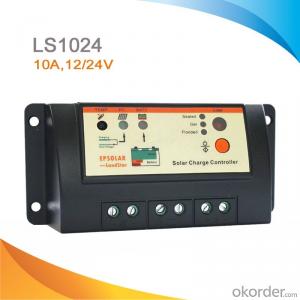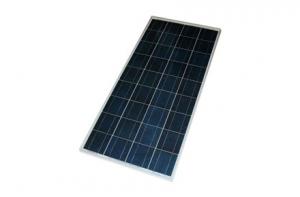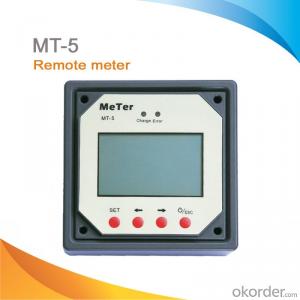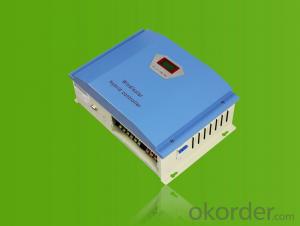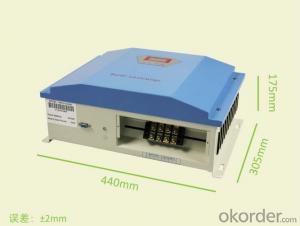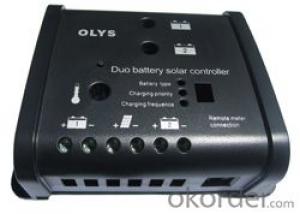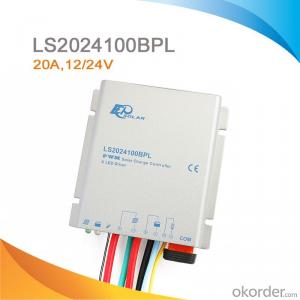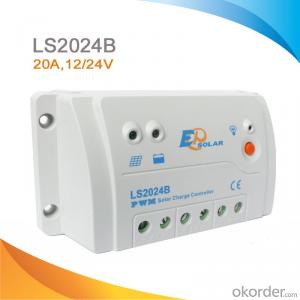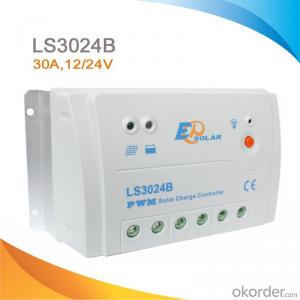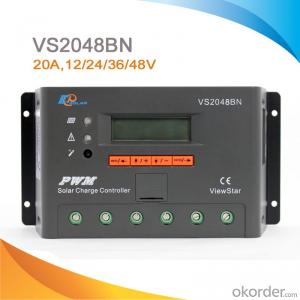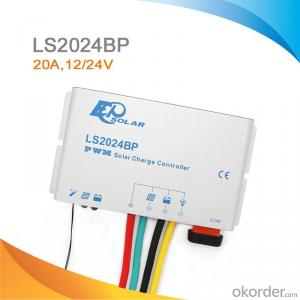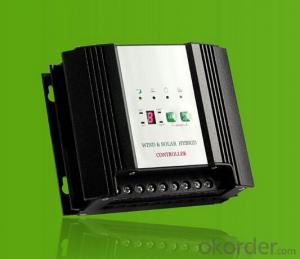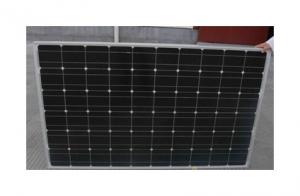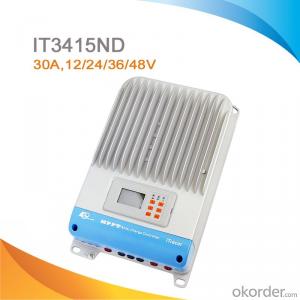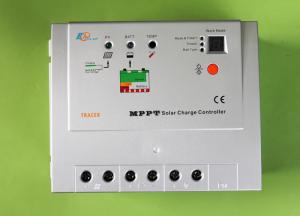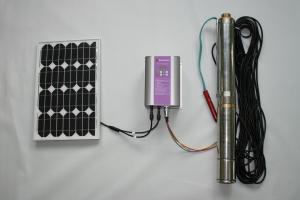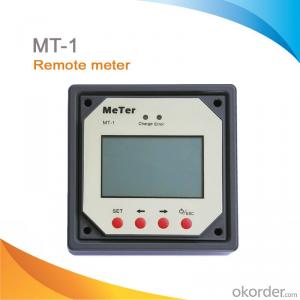Solar Epic Charge Controllers - PWM Solar Charge Controller, 20A, 12/24V with Integrated LED Driver
OKorder Service Pledge
OKorder Financial Service
You Might Also Like
Solar Controller Descriptions:
This series solar charge controller combines the solar charge controller and LED constant current driver Light and timer control (Single timer and dual timer optional) It It is ideal for public lighting area, such as street light, path way, garden lights, parking area, bus station etc.
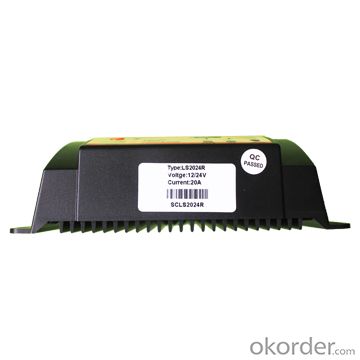
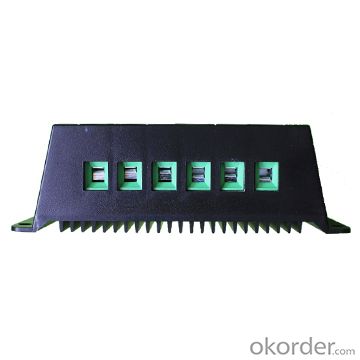
Features:
·High efficient Series PWM charging
·Use MOSFET as electronic switch
·Widely used, automatically recognize day/night
·Digital LED menu with simple setting and easy using
·Intelligent timer function with 1-15 hours option
·Gel, Sealed and Flooded battery type option
·Temperature compensation
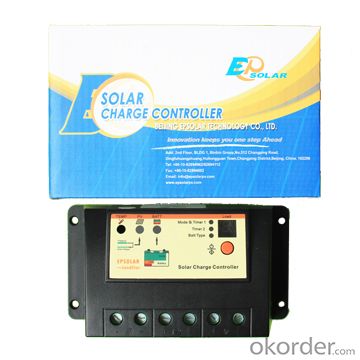
Electronic Protections:
·Overheating
·Over discharging
·Over charging
·Load overload
·Load short circuit
·PV reverse polarity
·Battery reverse polarity
Specification:
Electrical parameters | LS1024R | LS2024R |
Nominal System Voltage | 12 / 24VDC auto work | |
Rated Battery Current | 10A | 20A |
Max. Battery Voltage | 32V | |
Charge Circuit Voltage Drop | ≤0.26V | |
Discharge Circuit Voltage Drop | ≤0.15V | |
Self-consumption | ≤6mA | |
Overall dimension | 140 x 65 x 34mm | 144 x 75x 45mm |
Terminal | 4mm2 | 10mm2 |
Net weight | 0.15kg | 0.25kg |
Working temperature | -35℃ to +55℃ | |
Humidity | 10%-90% NC | |
Enclosure | IP30 | |
Battery Voltage Parameters (temperature at 25℃) | |||
Battery charging setting | Gel | Sealed | Flooded |
Equalize Charging Voltage | —— | 14.6V;x2/24V | 14.8V;x2/24V |
Boost Charging Voltage | 14.2V;x2/24V | 14.4V;x2/24V | 14.6V;x2/24V |
Float Charging Voltage | 13.8V;x2/24V | 13.8V;x2/24V | 13.8V;x2/24V |
Low Voltage Reconnect Voltage | 12.6V;x2/24V | 12.6V;x2/24V | 12.6V;x2/24V |
Low Voltage Disconnect Voltage | 11.1V;x2/24V | 11.1V;x2/24V | 11.1V;x2/24V |
Equalize Duration | —— | 2 hours | 2 hours |
Boost Duration | 2 hours | 2 hours | 2 hours |
- Q: How do I determine the maximum solar panel input current for a solar controller?
- To determine the maximum solar panel input current for a solar controller, you need to consider the specifications provided by the manufacturer. These specifications usually include the maximum input current rating of the controller. It is important to match the maximum input current of the solar panels to the maximum input current rating of the controller to ensure compatibility and prevent any potential damage to the system.
- Q: Can a solar controller be used with a solar-powered street lighting system?
- Yes, a solar controller can be used with a solar-powered street lighting system. A solar controller helps regulate and manage the charging and discharging of the batteries in the system, ensuring efficient utilization of solar energy and prolonging the lifespan of the batteries.
- Q: Are there any safety features built into solar controllers?
- Yes, there are several safety features built into solar controllers. One of the most important safety features is overcharge protection. Solar controllers are designed to prevent the batteries from being overcharged, which can lead to damage or even explosions. The controller monitors the battery voltage and adjusts the charging current to ensure that the battery is charged optimally without overcharging. Another safety feature is reverse polarity protection. This feature ensures that the solar controller will not be damaged if the battery or solar panel connections are accidentally reversed. It helps prevent any potential short-circuits or damage to the controller. Many solar controllers also have over-discharge protection. This feature prevents the battery from being discharged too much, which can reduce its lifespan or even cause irreversible damage. The controller monitors the battery voltage and automatically disconnects the load when the battery voltage drops below a certain threshold. Additionally, some solar controllers have temperature compensation. This feature adjusts the charging voltage based on the temperature of the battery. It ensures that the battery is charged properly regardless of the ambient temperature, which helps to extend the battery's life. Overall, solar controllers are equipped with various safety features to protect both the batteries and the controller itself. These features help to ensure the safe and efficient operation of solar power systems.
- Q: Can a solar controller be used with a wind turbine?
- No, a solar controller cannot be directly used with a wind turbine. Each type of renewable energy source requires a specific controller designed to handle the unique characteristics and needs of that particular source.
- Q: What is the role of temperature compensation in a solar controller?
- The role of temperature compensation in a solar controller is to adjust the charging parameters, such as voltage and current, based on the temperature of the battery. This helps to optimize the charging process and prevent overcharging or undercharging, which can reduce the lifespan of the battery. Temperature compensation ensures that the battery receives the appropriate charging voltage and current, regardless of the temperature fluctuations, leading to improved efficiency and longevity of the solar system.
- Q: What is the maximum distance between the solar panel and the solar controller?
- The maximum distance between the solar panel and the solar controller depends on various factors such as the type of wiring used, the voltage drop over the distance, and the specific requirements of the solar panel and controller being used. Generally, it is recommended to keep the distance between the panel and controller as short as possible to minimize voltage drop and ensure efficient energy transfer. However, in most cases, a maximum distance of around 100 feet (30 meters) is considered acceptable for low-voltage solar systems. It is always best to consult the manufacturer's guidelines or seek professional advice to determine the maximum distance suitable for your specific setup.
- Q: Can a solar controller be used with a solar-powered pool heating system?
- Yes, a solar controller can be used with a solar-powered pool heating system. A solar controller helps regulate and optimize the performance of the solar panels, ensuring efficient heating of the pool water. It monitors and adjusts factors such as temperature, flow rate, and system operation, making it an essential component for maximizing the effectiveness of a solar-powered pool heating system.
- Q: Can a solar controller be used with different battery types (AGM, gel, flooded)?
- Yes, a solar controller can be used with different battery types such as AGM (Absorbent Glass Mat), gel, and flooded batteries. However, it is important to select a solar controller that is compatible with the specific battery type being used. Different battery chemistries have varying charging requirements, and a solar controller designed for one battery type may not properly charge or maintain the charge of a different battery type. Most modern solar controllers are capable of adjusting their charging algorithms to suit different battery types. They typically have settings or modes that can be selected to optimize the charging parameters for AGM, gel, or flooded batteries. These settings ensure that the solar controller delivers the correct charging voltage and current to the battery, preventing overcharging or undercharging, which can damage the battery and reduce its lifespan. When selecting a solar controller, it is important to check its specifications and ensure that it explicitly mentions compatibility with the battery type you intend to use. Additionally, it is advisable to follow the manufacturer's recommendations and guidelines for proper setup and configuration of the solar controller to ensure efficient and safe charging of the battery.
- Q: Can a solar controller be used with a solar-powered event space?
- Yes, a solar controller can definitely be used with a solar-powered event space. A solar controller regulates the flow of electricity between the solar panels and the battery bank, ensuring optimal charging and preventing overcharging or damage. It is an essential component in any solar-powered system, including event spaces, as it helps maximize energy efficiency and maintain a stable power supply.
- Q: How do you prevent battery over-temperature with a solar controller?
- One way to prevent battery over-temperature with a solar controller is by implementing temperature sensors or probes that monitor the battery's temperature. The solar controller can be programmed to adjust the charging parameters, such as the charge current or voltage, based on the temperature readings. This allows for a controlled and efficient charging process, preventing the battery from overheating and potentially damaging its performance or lifespan.
Send your message to us
Solar Epic Charge Controllers - PWM Solar Charge Controller, 20A, 12/24V with Integrated LED Driver
OKorder Service Pledge
OKorder Financial Service
Similar products
Hot products
Hot Searches
Related keywords
